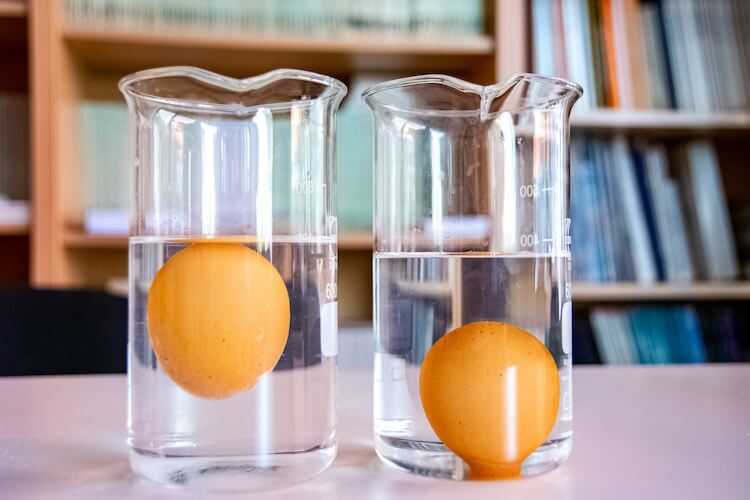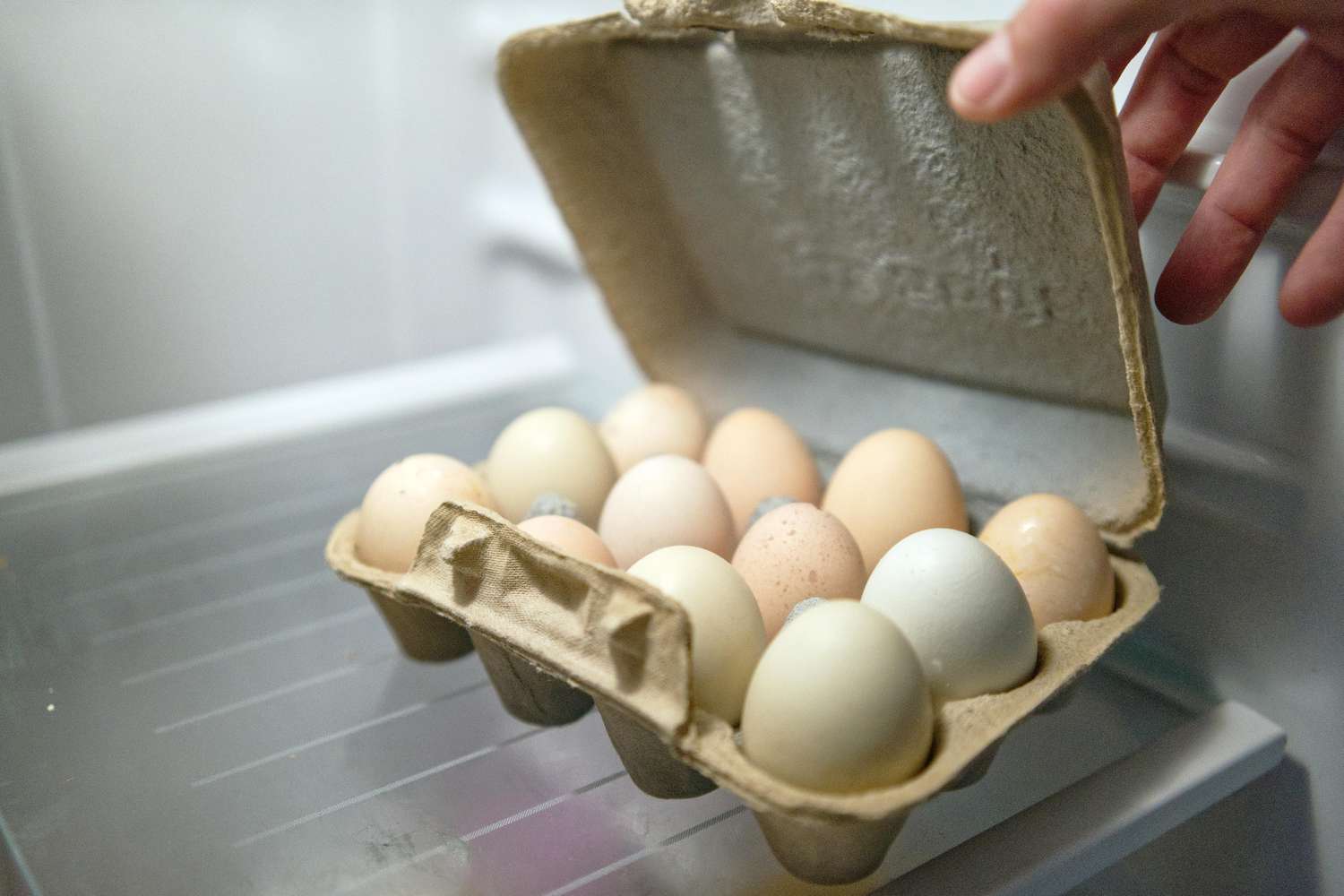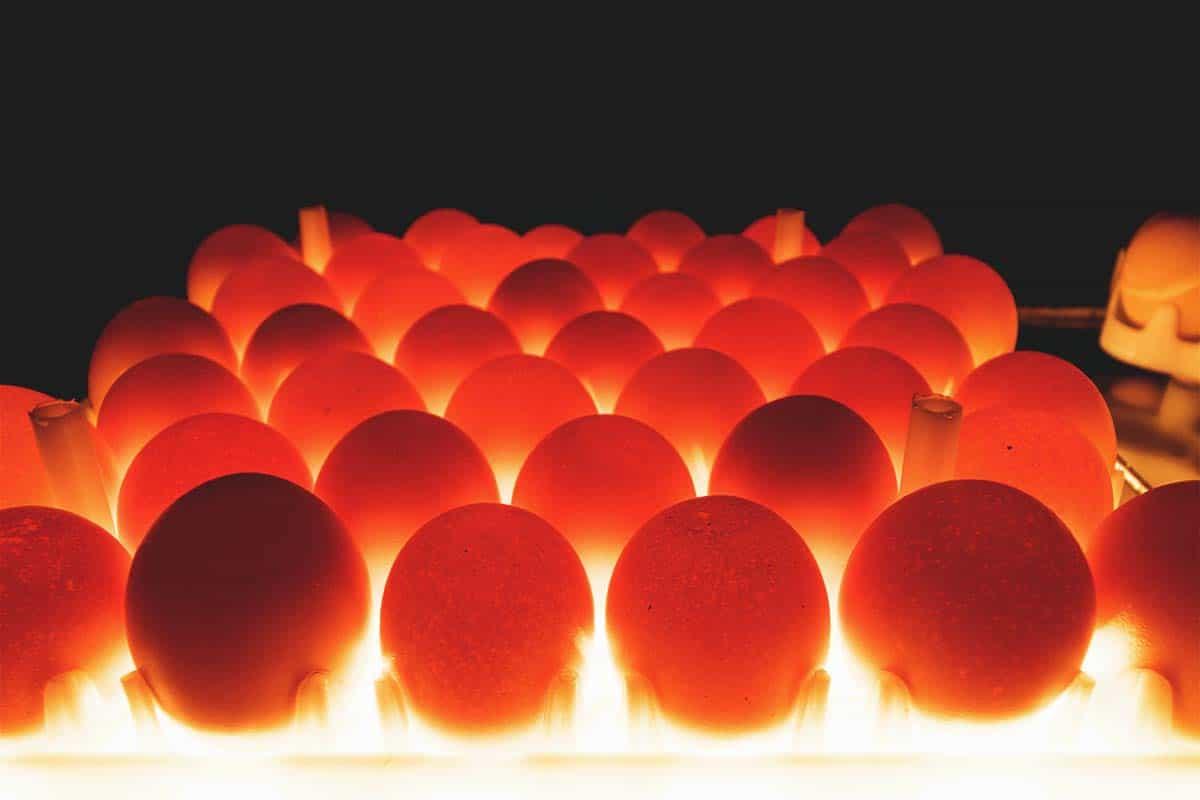Eggs are an indispensable staple in countless households, cherished for their culinary versatility and ability to elevate dishes to new heights. From fluffy omelets to luscious cakes, eggs play a pivotal role in a myriad of recipes, making them a must-have item in every kitchen. However, the importance of ensuring the freshness and safety of eggs cannot be overstated. Consuming spoiled or contaminated eggs can lead to severe foodborne illnesses, which can pose significant health risks. That’s why it is vital to be equipped with the knowledge and techniques to assess the quality of the eggs you use in your culinary creations. How to Tell if an Egg is Good or Bad:
The Water Test

Fill a medium-sized bowl with cool, clear water, making sure it’s deep enough to fully submerge the egg. How to Tell if an Egg is Good or Bad. Egg Timer Ensure your eggs are perfectly boiled every time with a reliable egg timer. It changes color to indicate whether your eggs are soft, medium, or hard-boiled, taking the guesswork out of the equation.
a. Gently take a fresh egg from its carton, ensuring it’s clean and without any visible cracks or damages. How to tell if an egg is good or bad? Slowly lower the egg into the water, allowing it to come to rest on the bottom of the bowl.
b. Observe the egg closely as it settles in the water. A truly fresh egg, just laid by a hen, will quickly sink to the bottom of the bowl, and you’ll notice it lying flat on its side. The weight and density of the eggshell, along with the small air pocket at the rounded end, cause it to remain submerged effortlessly.
c. An older but still edible egg, while not as fresh as a recently laid one, should also sink to the bottom of the bowl. However, you might notice a slight tilt or slight angle in its orientation, with one end slightly elevated from the bottom. This is because the air pocket inside the egg has grown slightly larger over time, affecting its buoyancy. how to tell if an egg is good or bad
d. How to tell if an egg is good or bad: Place the egg in a bowl of water. If it sinks to the bottom and lies flat on its side, it’s fresh and safe to eat. However, if it stands on one end at the bottom, it’s still good but might not be as fresh. If the egg floats up to the surface and doesn’t touch the bottom of the bowl at all, it’s an indication that the egg has gone bad and should be discarded immediately.
The Shake Test
a. Hold the egg close to your ear and shake it gently.
b. If you hear a distinct sloshing sound, the egg is likely old and its contents have started to deteriorate.
c. Fresh eggs will not produce a noticeable sound when shaken.
The Visual Inspection

When inspecting the egg’s shell, it is essential to carefully examine it for any visible cracks, which can compromise the egg’s integrity and increase the risk of contamination. How to tell if an egg is good or bad: Cracks can occur due to mishandling during transportation or storage, and they provide potential entry points for harmful bacteria, posing health risks if consumed. Egg Cracker Tool Easily crack open eggs without any mess using an egg cracker tool. It provides a clean and precise break, preventing any unwanted shell fragments from falling into your bowl.
In addition to cracks, it’s crucial to pay attention to any discoloration on the eggshell. Fresh eggs typically have a uniform and vibrant color. How to tell if an egg is good or bad: Discoloration, such as dark spots or unusual pigmentation, could indicate possible spoilage or age, suggesting that the egg might not be at its peak freshness.
The Odor Check
Crack the egg open onto a clean plate.
Fresh eggs will have a neutral odor or a faint, pleasant smell.
If you detect a strong, unpleasant odor, the egg has gone bad and should be discarded.
The Candling Method

Candling is a simple yet effective technique used to assess the quality and freshness of eggs. This process entails delicately shining a bright light source through the egg while being in a dimly lit or dark room, enabling a detailed examination of its internal contents. How to tell if an egg is good or bad. Egg Candling Light. If you want to take your egg inspection to the next level, consider an egg candling light. This handy device helps you see inside the egg to determine its quality and freshness.
When candling a fresh egg, you will observe a captivating sight. The yolk, nestled in the center, will appear well-defined and perfectly positioned. Its vibrant, rich golden hue will be prominently visible, radiating a sense of freshness and nutritional value. Surrounding the yolk, the egg white, or albumen, will form a clear and transparent layer, exuding a pristine appearance, indicating the egg’s prime condition.
However, keen observation during candling becomes crucial when you encounter any deviations from the anticipated sight. Should you notice any unusual shapes, such as misshapen or irregularly positioned yolks, it could be a sign of an aging or deteriorating egg.
Conclusion
Knowing how to tell if eggs are good or bad is a valuable skill for anyone who enjoys cooking or baking. By following the five methods outlined in this guide, you can ensure that the eggs you use are fresh, safe, and suitable for consumption. Trusting your senses and adopting proper storage practices are essential steps in maintaining the quality of your eggs. So, go ahead and confidently crack open those eggs for your next culinary adventure!
Frequently Asked Questions (FAQs)
How long can I keep eggs in the refrigerator?
Eggs can be stored in the refrigerator for up to four to five weeks from the pack date. Always check the expiration date on the carton for precise guidance.
Can I freeze eggs for future use?
Yes, you can freeze eggs. To do so, crack them into a container and lightly beat them before freezing. Use frozen eggs within four months for the best results.
Are organic eggs fresher than regular eggs?
Organic eggs come from hens raised with organic feed and free-range conditions, but their freshness does not differ significantly from regular eggs.
How can I tell if an egg is pasteurized?
Pasteurized eggs are usually labeled as such on the carton. They have been treated to eliminate harmful bacteria while preserving the egg’s freshness.
What are the health benefits of consuming fresh eggs?
Fresh eggs are a rich source of protein, vitamins, and minerals, contributing to overall health and well-being when consumed as part of a balanced diet.
Can I eat eggs after the expiration date?
It is not recommended to consume eggs after their expiration date, as their quality and safety cannot be guaranteed.




